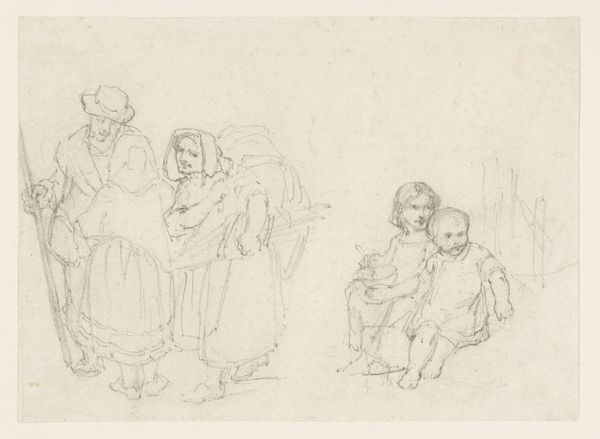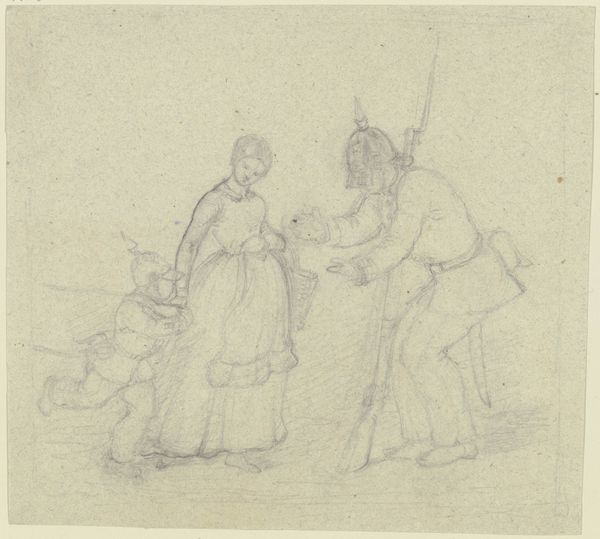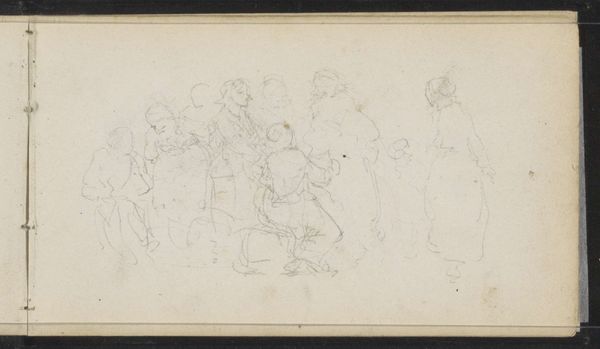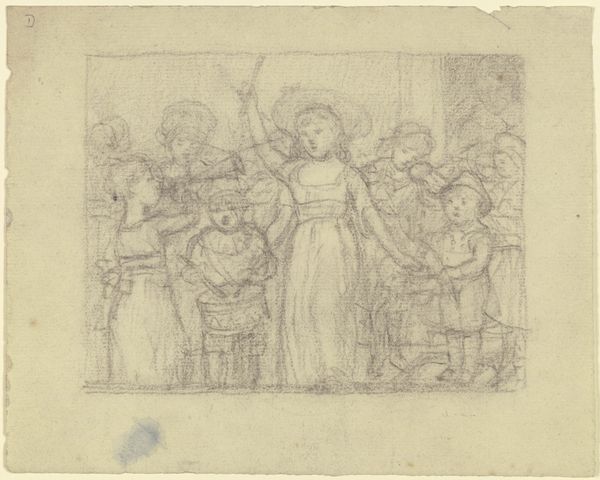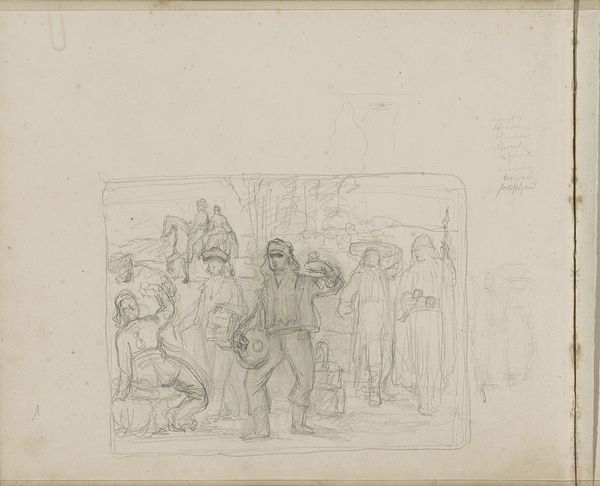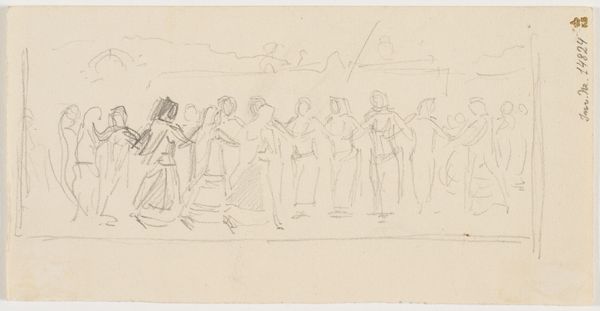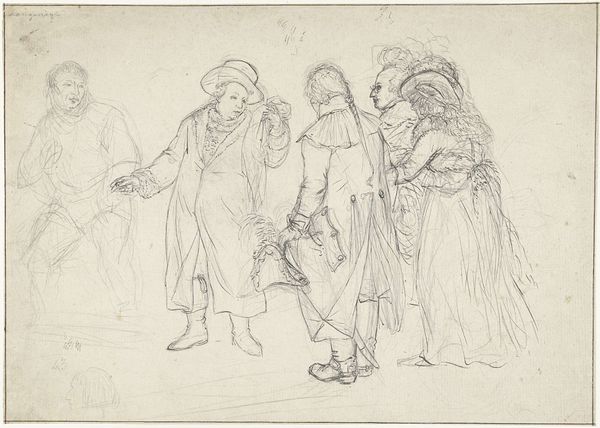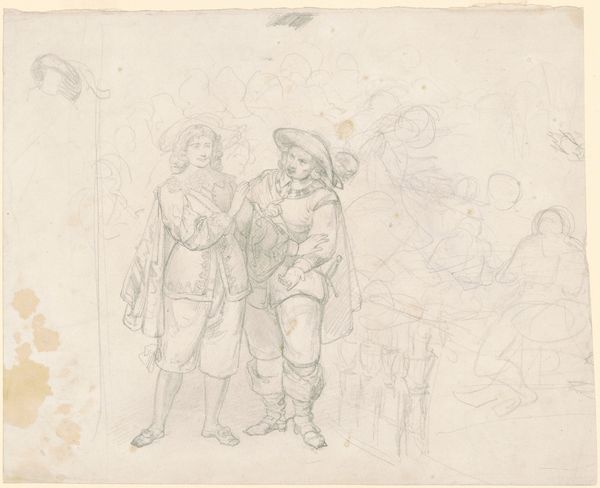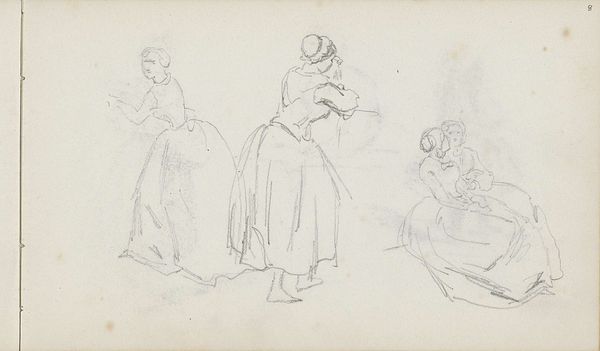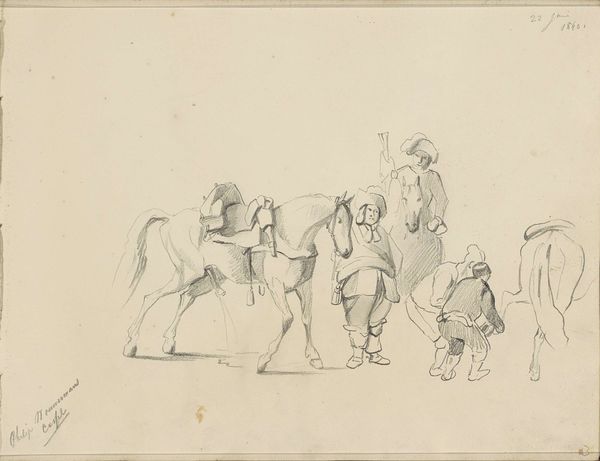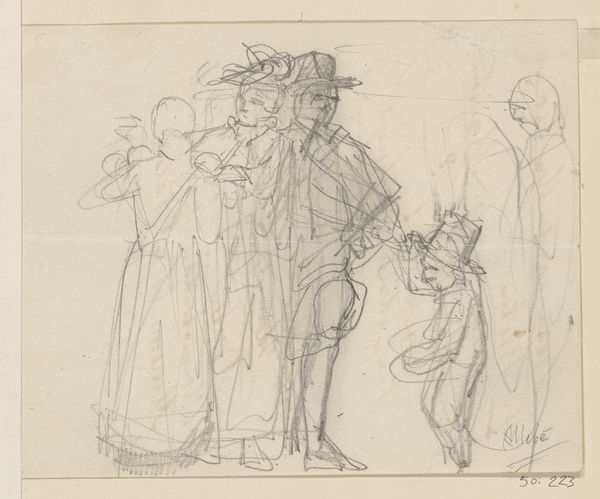
drawing, pencil
#
drawing
#
16_19th-century
#
pencil sketch
#
figuration
#
romanticism
#
pencil
#
genre-painting
Copyright: Public Domain
Editor: Here we have Carl Philipp Fohr's "Szene aus dem italienischen Volksleben," a pencil drawing from around 1816-1817. It strikes me as light and airy, almost like a memory being sketched out. What do you see in this piece? Curator: Immediately, the circle they form speaks of ritual and community. The dance itself, though lightly rendered, echoes traditions stretching back centuries. Look at how Fohr uses the pencil – the faintest lines suggest a crowd, a shared experience almost fading into collective memory. Editor: So, it's about more than just a snapshot of Italian life? Curator: Precisely. Consider the period – the early 19th century, a time of burgeoning Romanticism. There's a longing here, a yearning for an idealized past embodied in this rustic scene. The musical instruments evoke festivity, yet also a melancholic sense of transience, *memento mori.* Notice, the central dancer isn’t grounded; her foot barely touches the sketch of the circular dance floor. Is that a fleeting feeling? Editor: It feels like Fohr's trying to capture something intangible, something felt rather than explicitly seen. Like the emotions, nostalgia, or cultural identity being celebrated in this community ritual are hard to materialize or touch in the physical form. Curator: Exactly! It invites us to ponder our own relationship with the past and its visual languages, no? It serves to illuminate the subtle and powerful ways that imagery shapes our cultural consciousness. Do you think this way of using and rendering an image of a common social performance helps perpetuate a specific image about a community? Editor: Definitely. This piece is more evocative than descriptive, making the past feel accessible but also carefully constructed. It reminds us to consider the choices inherent in representing any culture. Curator: I agree completely. Art can shape memory as much as it reflects it. Thanks, this reflection makes this imagery richer.
Comments
No comments
Be the first to comment and join the conversation on the ultimate creative platform.
